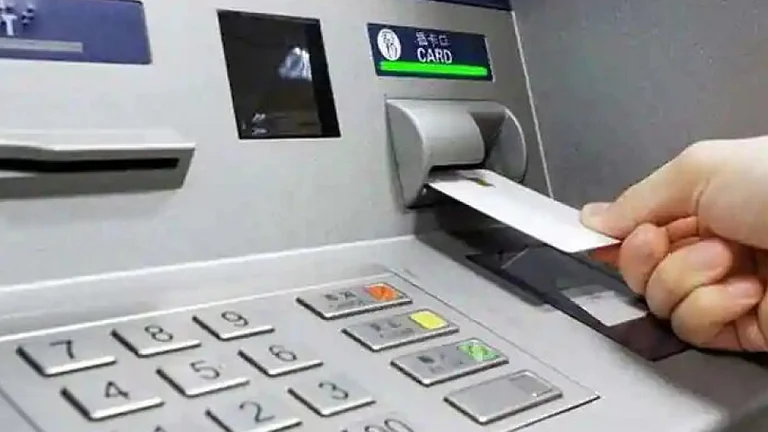In light of the frequent outages in the Unified Payment Interface (UPI) system a couple of times in the last 30 days (March 26, April 2, and April 12), Union Minister of Finance Nirmala Sitharaman has asked all stakeholders to work in collaboration to bridge the gaps in the UPI infrastructure.
UPI Outages: NPCI Issues Guidelines To Ensure Uninterrupted UPI Service
UPI outages have become more frequent, with three disruptions occurring in last 40 days. To avoid this in future, the NPCI has issued guidelines
The finance ministry posted on social media platform X (formerly Twitter), directing the National Payments Corporation of India (NPCI) to work towards creating a robust system to avoid disruptions in the future.
UPI was launched in 2016, and since its implementation, has been growing multifold every year.
Of late, there have been quite a few instances of outages as a result of overload. Notably, UPI transactions between 2019-20 and 2024-25 have grown at an astounding compounded annual growth rate (CAGR) of 72 per cent. At present, it has around 450 million active users.
To make the system more robust, NPCI issued guidelines on April 26, 2025, laying down rules for UPI members. But, before checking these rules, let us understand how it works.
How Does UPI Infrastructure Work?
Jai Kumar, co-founder, TechFini, says, “UPI infrastructure operates through a layered architecture that enables real-time, seamless money transfers between bank accounts using mobile applications.”
“When a transaction is initiated, it passes through the banking system, which handles the back-end processing. NPCI is responsible for routing transactions between banks, ensuring they are validated, processed, and settled in real-time. The entire process relies heavily on a network of secure application programming interfaces (APIs), including those for initiating payments, verifying user details, and checking transaction status. UPI leverages the Immediate Payment Service (IMPS) framework, allowing for 24/7 fund transfers with instant confirmation, making it a highly efficient and user-friendly payment system,” he adds.
How Are The UPI Outage And UPI API Related?
Kumar says that UPI outages and disruptions are closely linked to how UPI APIs, particularly the 'Check Transaction Status' API are used and managed.
“This specific API is designed to verify the status of a transaction when there is uncertainty about its completion, such as in cases of delayed confirmations or app crashes,” he says.
“However, during the recent outage, many banks and payment apps excessively and repeatedly called this API in quick succession, even for transactions that had already been resolved. This misuse led to a spike in API traffic, putting immense pressure on NPCI’s central systems and triggering systemic slowdowns. The root of the problem might lie in the lack of proper rate limiting and monitoring mechanisms, both on the part of banks and at the NPCI switch level,” he adds.
NPCI Guidelines
Now, NPCI has laid down the following guidelines to prevent such snags in the future.
• The PSP or acquiring banks are advised to check that the API requests to UPI are ‘monitored and moderated’ for appropriate usage and restrict a high number of APIs for the same or old transaction.
• These PSP banks will need to ensure that no batch processing of non-financial APIs is sent to the UPI online system.
• They are required to start checking the transaction status of the API after 90 seconds of initiation.
• If the transaction ID does not show or is found in the UPI system within two hours from the initiation of the transaction, PSP/acquiring banks should refer to the NPCI settlement cycle. Otherwise, UPI members, at the maximum, may initiate one ‘check transaction status API’ on the Unified Dispute and Issue Resolution (UDIR) to learn about the settlement status of the transaction.
• If there is an error already given in the NPCI’s list, the PSP bank will not initiate the check transaction status API again and consider the transaction has failed.
• The remitter bank will be able to view the specific UPI API, and upon noticing any abnormality, have to report it to NPCI.
• NPCI may further consider implementing ‘rate limiters on select UPI APIs after consulting with the concerned authority
Kumar adds: “One of the key changes includes strict enforcement of limits on the ‘Check Transaction Status’ API, allowing a maximum of three status checks per transaction with a mandatory 90-second gap between attempts. This measure is intended to prevent the kind of API overuse that led to system overload during the April 12 outage. Additionally, NPCI has mandated standardisation of UPI transaction IDs, requiring them to be exactly 35 characters long and strictly alphanumeric, to ensure smoother and more consistent processing across the network.”
NPCI has said that these guidelines can significantly reduce the unnecessary burden of the 'check transaction status API' from the system.



